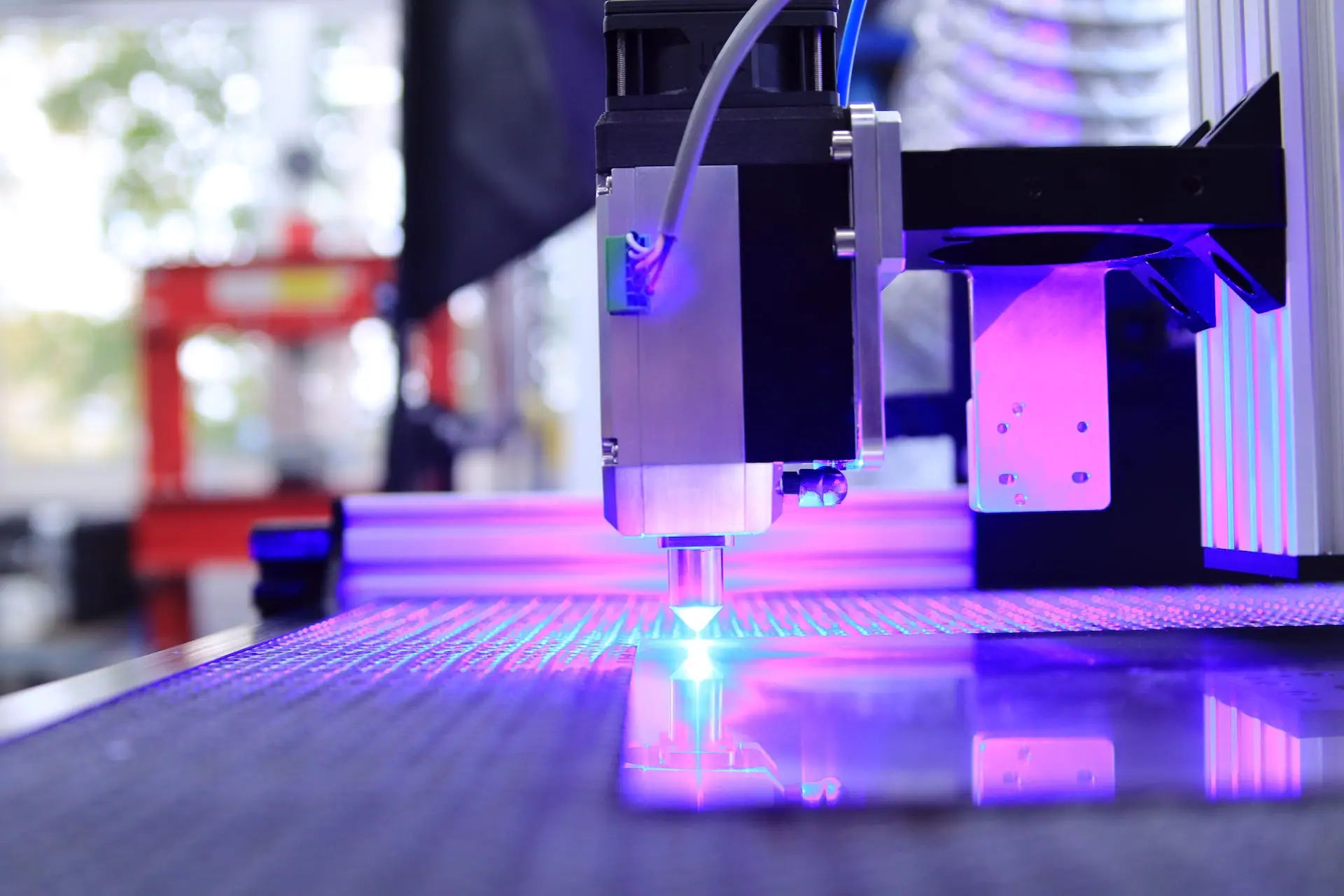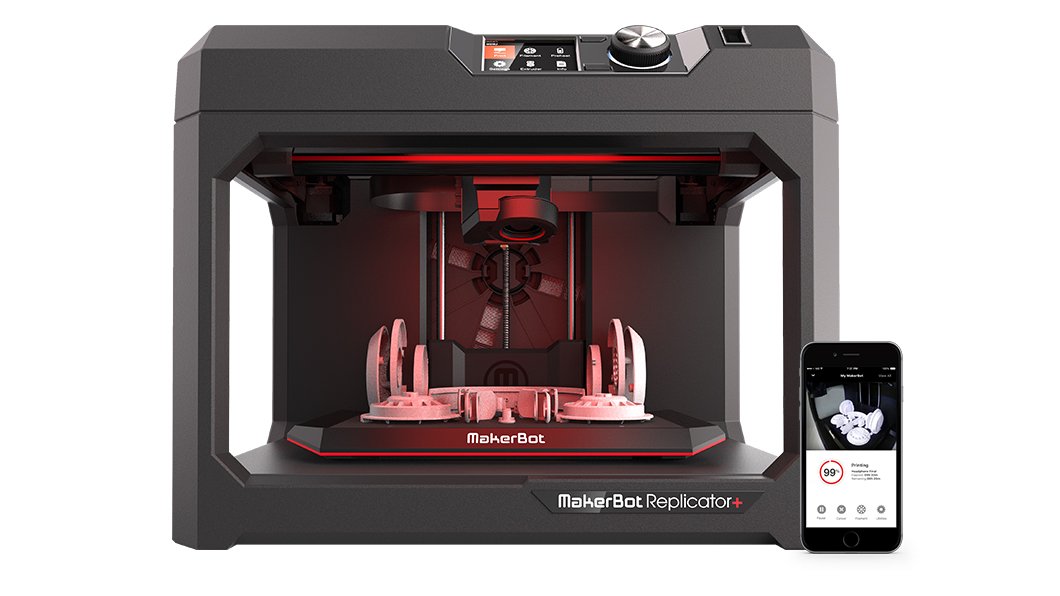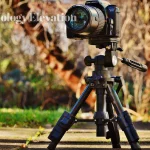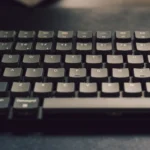
The Best 3D Printers: The Future of Manufacturing?
3D printing is a new technology that has been around for over the last decade. However, thanks mainly to an open-source movement called “RepRap,” this fantastic device can now be affordable and used by designers, engineers, hobbyists, and school consumers alike!
3D printers are taking over the world! There’s one for every application, which comes in different shapes. Some models lean more towards professionals, while amateurs can use others at home or even kids on a budget – we’ve seen it done before (and reviewed). But no matter what, you need them. For there is always an option out there waiting just down your alley: whether expensive ($6k+), midrange ($200-$500), or low-cost entry-level ($100-$200).
In 2023, the 3D printing market was expected to experience a surge in demand. 3D printers are becoming increasingly sophisticated and more user-friendly with new advancements and capability-enhancing features. Whether you’re an engineer looking to create prototypes or a hobbyist interested in producing custom collectibles and figurines, there’s a 3D printer for you.
3D printers are a hot commodity, and it’s essential to know how they differ to choose the suitable model for your needs. Read our mini-reviews of top models we’ve tested – with reviews covering various uses or users! We then detail what makes each type special regarding quality/performance tradeoffs (and why this matters).
OUR TOP PICKS of The Best 3D Printers of 2024
1. Monoprice MP Cadet 3D Printer

Monoprice’s MP Select Mini 3D Printer is the latest in 3D printing technology, offering a complete auto-leveling system for ease of use. The print head moves up and down to ensure your prints appear perfectly level every time. The MP Select Mini can connect directly to your computer via USB or WiFi. It comes with an SD card reader to print from any source. Its small size means it doesn’t take up much space on your desk, but it’s still big enough to print objects as large as 5″ x 5″ x 5″.
The Monoprice MP Cadet 3D Printer is a high-performance printer that delivers professional quality prints at an affordable price. The MP Cadet features a compact design for easy storage and mobility, with the ability to print objects up to 5.5″ x 5.5″ x 6″. It also comes fully assembled and ready to use right out of the box! Remove the Printer from its packaging, place it on a level surface, connect it to your computer via USB cable (included), install any required drivers, and you’re ready to start printing.
The Monoprice MP Cadet 3D Printer is the perfect machine for anyone who wants to get into 3D printing. Its small footprint makes it ideal for a desktop, office, dorm room, or classroom. At only 6.6 lbs. (3kg), it’s also very lightweight and easy to move around. The Printer is also equipped with WiFi so you can print from anywhere in your home or office.
Specifications:
- Brand Name: Monoprice
- Color: Off-White, Grey
- Compatible Devices: The desktop Included Components: 3D Printer, Starter Filament, AC Adapter, USB Cable, microSD Card, Start Guide
- Item Weight: 6.61 pounds
Reason To Buy
+ Affordable for frugal users.
+ Easy to store and compact.
+ Beginner-friendly pre-assembled design.
+ Easy setup and software.
Reason To Avoid
– Limited features compared to higher-end models.
– Smaller print sizes limit project alternatives.
2. Artillery Sidewinder X2 3D Printer

The Artillery Sidewinder X2 3D Printer is a high-quality machine that is perfect for use in a professional setting. It features an exclusive ultra-quiet stepper driver, making it quiet even when working fast. Additionally, its build volume is 300 x 300 x 400 mm, making it one of the largest on the market. Finally, it is 95% pre-assembled, making it easy to set up and use right out of the box.
The Artillery Sidewinder X2 is a rapid-heating 3D printer with a Lattice glass smooth surface that prints smoothly and easily releases printed objects. With fast and stable heating to 110 ℃ in 2 minutes, the Sidewinder X2 is perfect for professional use. The direct drive extruder has a print speed of 150 mm/s, making it ideal for high-quality prints with flexible filaments.
The Artillery Sidewinder X2 is a 3D printer designed for professionals. It has filament runout detection and recovery, so prints can be resumed from the last layer if power is lost. This saves time and money.
Specifications:
- Brand: MINI CUTE
- Material: Aluminum
- Color: Black
- Item Weight: 28.4 Pounds
- Supported File Format: Slicer, prusaslicer, cura, kisslicer, idea maker, slic3r, simplify3d
Reason To Buy
+ Large build volume for larger 3D printing projects.
+ Excellent prints with detail.
+ Stepper motor drivers with quieter operation.
+ Reliable, long-lasting construction.
Reason To Avoid
– More expensive than entry-level 3D printers.
– Beginners may struggle with complex assembly and setup.
3. MakerBot Replicator+ 3D Printer

The MakerBot Replicator+ is the most advanced 3D Printer from MakerBot. It features a swappable Smart Extruder+, a build volume of 7.6″ W x 11.6″ L x 6.5″ H, and a camera resolution of 640 x 480. With a power requirement of 100-240 V, 50-60 HZ, and material diameter of 0.069″, the MakerBot Replicator+ is perfect for professionals and educators alike.
The MakerBot Replicator+ is the latest generation of desktop 3D printers from MakerBot. It builds on the success of its predecessor, the fifth-generation MakerBot Replicator, and combines it with new features to create a more reliable and easier-to-use 3D printer. A result is a machine that’s easier to set up, use, and maintain.
The MakerBot Replicator+ is the only 3D Printer tested by NIOSH for environmental safety in the classroom or office space. It features aluminum casting and extrusions for motion components, making it more reliable and durable than ever. Winner of the PC Mag Editor’s Choice Award, iF Design Award, and Techcrunch best Classroom 3D printer, the MakerBot Replicator+ is perfect for professionals and educators.
Specifications:
- Brand Name: MakerBot
- Compatible Material: Polylactic Acid
- Material: PLA Color Black
- Compatible Material: Aluminum, Polycarbonate, Polylactic Acid.
- Connectivity Technology: USB
Reason To Buy
+ Simple to use.
+ Excellent print quality.
+ User-friendly, powerful program.
+ Prints from USB, Ethernet, Wi-Fi, and USB flash drives.
+ Safe open-frame printer design.
+ Somewhat quiet.
Reason To Avoid
– MakerBot Mobile app printer setup is difficult.
– A bit costly filament.
4. Dremel Digilab 3D Printer with PLA Filament

The Dremel Digilab 3D45 Idea Builder is one of the best 3d printer options for printing advanced materials, such as ECO-ABS, Nylon, PETG, and PLA filament. It comes with a 0.4 mm nozzle that heats up to 280°C and a removable glass build plate that heats up to 100°C. With an all-metal frame and extruder, you can print almost anything with this 3D Printer.
The Dremel Digilab 3D45 has a pre-installed software suite that makes it easier to control your print jobs and an online user community for tips and tricks. It also supports WiFi connectivity, allowing you to monitor prints from anywhere. Finally, the 3D45 comes with its filament spool and a wide range of colors.
The Dremel DigiLab 3D45 is a complete, plug-and-play 3D printer. It’s easy to use and produces high-quality prints. The 4.5″ touchscreen guides you through the setup process and lets you easily monitor your print progress from anywhere using an iOS or Android device over WiFi. The 9-point leveling sensor detects any variation in the print bed for more successful printing. The automated build plate adheres to the standard 1.75mm Dremel filament for simple loading each time you start a new project.
The Dremel DigiLab 3D45-01 is a professional-grade 3D printer with the highest print quality in its price range. With a build volume of 4.5 x 4.5 x 4.5 inches, the 3D45-01 can easily print complex, high-resolution objects. It also features an easy-to-use LCD touchscreen interface and a heated build platform for printing in various materials.
Specifications:
- Brand Name: Dremel Digilab
- Material: Abs
- Color: Black
- Item Weight: 42.8 Pounds
- Compatible Devices: Personal Computer
Reason To Buy
+ Beginner-friendly and reliable.
+ High-quality, reliable printouts.
+ Inclusive PLA filament adds value.
+ Strong customer service and documentation.
Reason To Avoid
– Costlier than some entry-level 3D printers.
– Low versatility compared to sophisticated models.
5. Ultimaker S5 3D Printer

The Ultimaker S5 is the newest large-format 3D Printer from Ultimaker. It offers dual extrusion capability, making it perfect for multi-material prints. With a build volume of 330 x 240 x 200 mm, the Ultimaker S5 is ideal for both professional and industrial applications.
The Ultimaker S5 is a 3D printer for professional users. The Printer has a heated bed, which allows printing with ABS and other materials that need to be heated to print correctly. It also has a build volume of 16 x 16 x 20 cm (6″ x 6″ x 8″). The Printer is fast, accurate, and very easy to use.
Ultimaker S5 3D Printer – The professional’s choice for reliable, high-quality 3D printing. The innovative Print Core system allows for simple swapping hot ends, while water-soluble supports allow for smooth surfaces and complex geometry.
Specifications:
- Brand: Ultimaker
- Material: PLA
- Color : Multicolored
- Item Weight: 20.6 Kilograms
- Compatible Devices: Personal Computer
Reason To Buy
+ 2 extruders.
+ Huge construction.
+ Quiet.
+ Good print.
+ Setup and use are simple.
+ Tap display.
Reason To Avoid
– Pricey.
– Slow default-resolution printing.
6. ANYCUBIC Vyper 3D Printer

ANYCUBIC Vyper 3D Printer is a large-sized printer with a small body, which can print 9.6″ (L) x 9.6″ (W) x 10.2″ (H) / 245 x 245 x 260mm; it has a double extruder and two hotels for multi-color printing, equipped with the high-performance main board and silent driver TMC2209, you can get high-quality models with fast speed and higher precision.
ANYCUBIC Vyper 3D Printer adopts a new platform of a special coating combined with spring steel, which features non-deformation at high temperatures, scratch-resistant coating, and easy model removal by bending or popping. Widely compatible with PLA/ABS/PETG/TPU filaments.
ANYCUBIC Vyper 3D Printer prints quickly with high quality, thanks to its double fan two-way heat dissipation system. The Z-axis Gap Elimination Module ensures printing precision, while the integrated structure and modular design make for easy assembly. The large touch screen is easy to operate, and the double-gear extrusion system reduces filament tangling. The Printer also resumes printing after a power outage and can detect material breakage.
Specifications:
- Brand: ANYCUBIC
- Material: Metal
- Color: Black
- Item Weight: 10 Kilograms
- Compatible Devices: Laptop
Reason To Buy
+ Affordable.
+ Prints quickly and accurately.
+ Easy assembly.
Reason To Avoid
– Very loud fans.
– The leveling software is inconsistent.
– Hot enough to concern.
Factors To Consider While Buying The Best 3D Printers of 2024
If you’re looking for the best 3D Printer in 2024, certain features will be necessary for your project. No matter what price range or needs might exist in mind – we’ve concluded with this list of necessities:
High-Quality Prints:
With the correct settings, this Printer can produce high-quality prints full of detail. The model will have layers 0.1mm or thinner with barely visible transitions between them for a result unlike anything else on your desk!
Ample Connectivity Options:
Ideally, you should be able to start a print over WiFi or transfer the file using either USB cable. Loading files onto an SD card that you plug into your Printer is also okay. Still, some people may be frustrated by having their computers tethered 24/7. This can get inconvenient sometimes, especially if they’re on holiday and don’t want/need constant access while away from home!
Easy-To-Use Hardware:
The Printer is designed with a simple and intuitive interface. Even someone who has never used one before should be able to put it together, load filament into their machine Noah’s Ark style printout (if they want), start-up prints from various models or designs/Blueprints on file locally, then remove finished items once complete!
Intuitive Software:
Intuitive software is excellent for beginners who want to use a printer’s settings. The intuitive user interface should come preloaded with printable models but provide more options in expert hands so that they can fine-tune their work on the fly without going through various menus or switching screens, just as it means business time!
We love how compatible most newer models are when paired up nicely via Ultimaker Cura, which has become somewhat of an industry standard – if not a favorite altogether due to its ease-of-use features alongside high-quality output where every detail matters even down the smallest hairs around the patient’s face for example.
Heated Bed:
You can print using more than ABS and PLA materials with a heated bed. Heating also helps keep models stuck to the Printer’s tray so they don’t wander off before being finished!
Large enough print volume:
The reality is that most libraries have printers designed for small 3D printer beds. So if you want your model to be larger than what can fit on one of these smaller models, then it will require some workarounds like printing multiple pieces together or using other materials such as wood glue instead of plastic filament (which could cause problems depending upon how durable the final product needs to withstand).
Compatibility With Any Brand Of Filament:
This can be a problem if the company that makes your 3D Printer goes out of business. Proprietary filaments are often more expensive, and you’ll have to buy refills directly from them instead – but good news! There is an easier way around this: compatibility with any brand of filament allows users some flexibility when it comes time for replacement prints since they won’t need special tools or instructions just because one specific type was used during the printing process.
Suited To Everyday Life:
The best printers for everyday life are the ones that can fit in your house and be quiet. They should also print faster than they take to load, so you don’t have long wait times or missed deadlines while waiting on prints wrinkling up frustration-level proportions! A good choice is plastic made out of polylactic acid (PLA). Not only does this material melt at a lower temperature, reducing its release of VOCs [volatile organic compounds], but since no toxic chemical is used during production—heat!–it’s been found safer by children AND adults alike when using their 3D Printer inside an open area air ventilation system.
Enclosed printing chamber:
The enclosed printing chamber: Enclosing the print space keeps prints at a consistent temperature to prevent warping and other printing imperfections. It’s an excellent idea for those using acrylonitrile butadiene styrene (ABS) or another material that may shrink more easily when cool because it can cause cracks in your model if left unchecked during the cooling process.
Frequently Asked Questions
Q. What materials can be used in 3D printing?
3D printing materials vary depending on the Printer’s capabilities, but some of the most common include PLA, ABS, PETG, nylon, polycarbonate, and composite filaments. Each material has its advantages and disadvantages for specific projects. It is essential to research the best material for the task before beginning.
Q. What are the benefits of 3D printing?
3D printing offers several advantages over traditional manufacturing methods, including reduced costs, faster production times, and greater design flexibility. Additionally, 3D-printed parts can be made to exact specifications with complex geometries that would be difficult or impossible to create with traditional methods. This makes 3D printing ideal for prototyping, low-volume production runs, and one-off custom designs.
Q. What Kind of Filament Should Your 3D Printer Use?
It depends on your printer type, your printing material, and your desired results. Most 3D printers use one of two types of filament: ABS or PLA.
ABS is a strong plastic that is most often used for items that need to be durable, such as furniture or car parts. PLA is a biodegradable plastic from corn starch often used for food containers and medical implants.
Each type of filament has advantages and disadvantages, so it’s essential to research before purchasing any filament to ensure you get the best results for your specific Printer.
Q. How High a Resolution Do You Need in a 3D Printer?
Answer: The resolution you need in a 3D printer depends on the size of the object you plan to print and the degree of detail you want in the finished product.
For objects measuring less than 4 inches cubed, a resolution of 100 microns (0.1 millimeters) should produce satisfactory results. For larger objects or more intricate designs, a higher resolution is necessary. Some 3D printers can achieve resolutions as small as 20 microns, which is adequate for most purposes. However, if very high-resolution printing is required, it may be necessary to seek a specialty printer with a higher resolution capability.
Q. Why Is a 3D Printer’s Build Platform Important?
The build platform of a 3D printer is important because it is the surface on which the object to be printed is placed. It must be flat and level to produce a print with accurate dimensions. If the build platform isn’t level, the image will be skewed, and the accuracy of the measurements will be compromised.
There are several ways to adjust the height of the build platform on a 3D printer. Some printers have adjustment screws that can be turned by hand, while others have adjustment knobs or levers that must be pulled or pushed. Some printers have automatic leveling systems that use sensors to detect unevenness in the build platform and make appropriate adjustments.
Conclusion
3D printing technology has come a long way and is only going to get better.3D printers have many practical applications, such as in the medical field, manufacturing, and education. 3D printing technology constantly evolves, so stay current on the latest advancements. The printers mentioned above are the best 3D printers in quality, affordability, and versatility. If you’re looking for a high-quality printer that can handle a wide range of projects, one of these options is sure to fit your needs.




GIPHY App Key not set. Please check settings